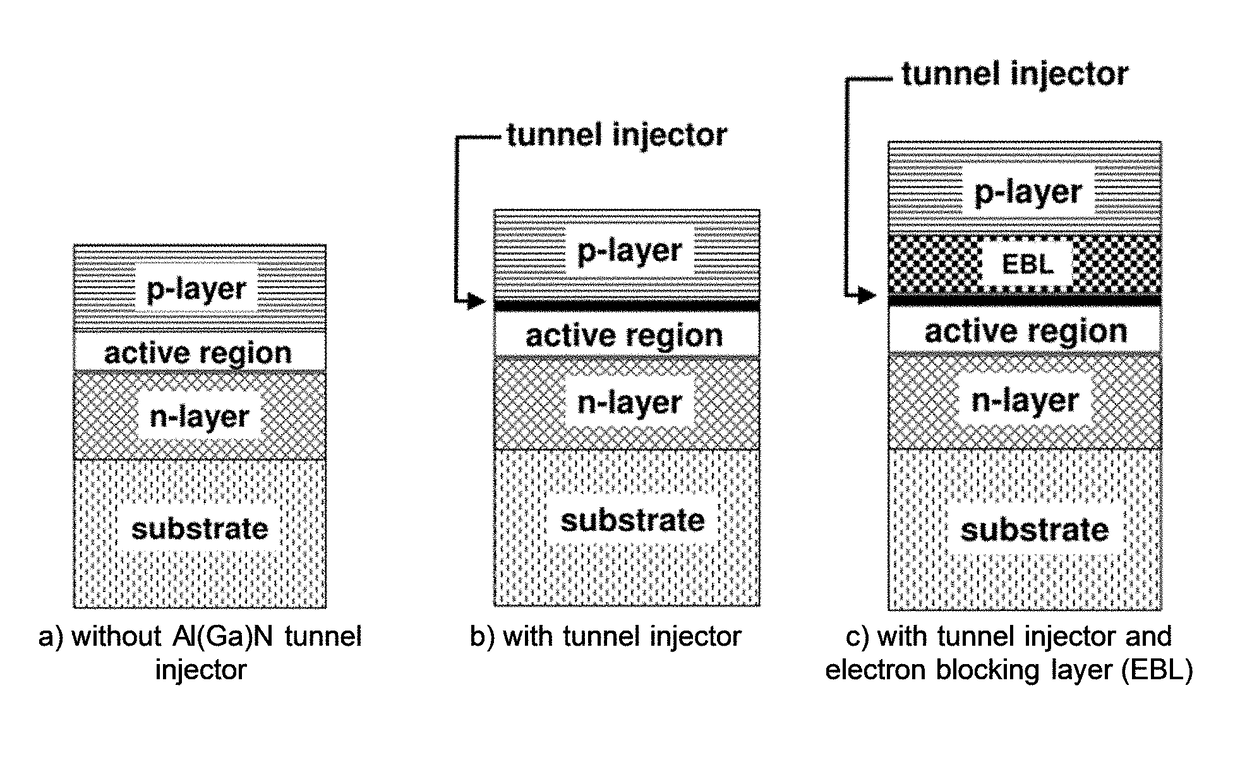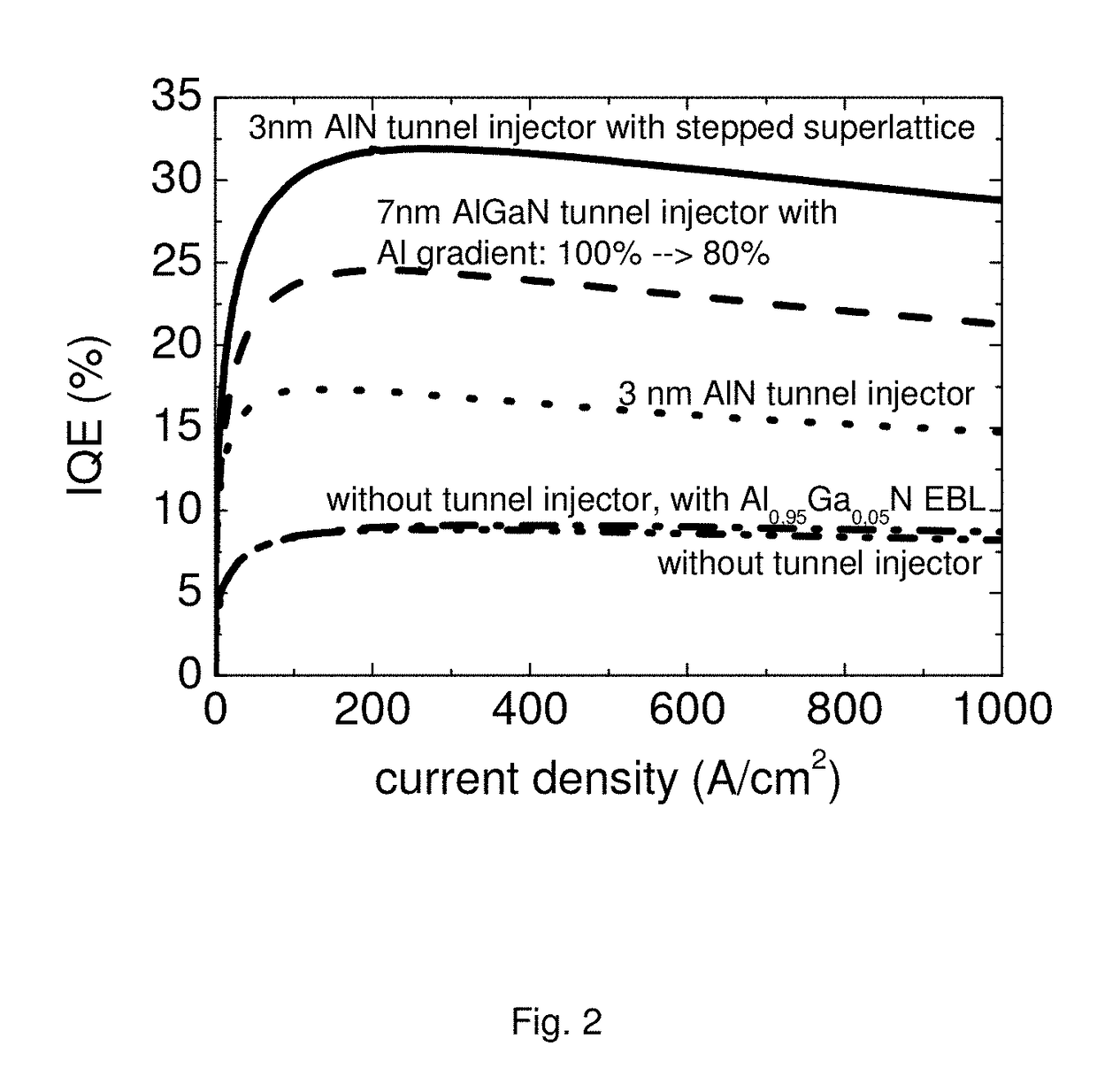UV LED with tunnel-injection layer
a technology of ultraviolet light and tunnel injection layer, which is applied in the direction of semiconductor/solid-state device manufacturing, electrical apparatus, and semiconductor devices. it can solve the problems of unwanted parasitic luminescence, low carrier injection rate, and ineffective p-doping of these wavelengths, so as to reduce ancillary luminescence and improve internal and external quantum efficiency.
- Summary
- Abstract
- Description
- Claims
- Application Information
AI Technical Summary
Benefits of technology
Problems solved by technology
Method used
Image
Examples
Embodiment Construction
[0018]The invention provides a semiconductor-based ultraviolet (UV) light emitting diode structure having a thin doped or undoped AlN or AlGaN injection layer (with high Aluminum content) between the light emitting active zone and the p-doped layers of a UV LED. In one embodiment, the AlN or AlGaN injection layer is unintentionally doped. In another embodiment, the AlN or AlGaN injection layer is n-doped, e.g., doped with Si, Ge, or O. In preferred embodiments, the AlN or AlGaN injection layer should not be Mg-doped. The inventors have found that the hole injection into the active zone is unexpectedly improved by using the inventive injection layer in semiconductor-based ultraviolet (UV) light emitting diode devices, which greatly improves the external quantum efficiency (EQE) and internal quantum efficiency (IQE). Light emitting heterostructures and LEDs and methods of making such devices and structures are described in U.S. 2010 / 0032647; U.S. Pat. Nos. 7,977,687; 7,848,379; 7,812,...
PUM
 Login to View More
Login to View More Abstract
Description
Claims
Application Information
 Login to View More
Login to View More - R&D
- Intellectual Property
- Life Sciences
- Materials
- Tech Scout
- Unparalleled Data Quality
- Higher Quality Content
- 60% Fewer Hallucinations
Browse by: Latest US Patents, China's latest patents, Technical Efficacy Thesaurus, Application Domain, Technology Topic, Popular Technical Reports.
© 2025 PatSnap. All rights reserved.Legal|Privacy policy|Modern Slavery Act Transparency Statement|Sitemap|About US| Contact US: help@patsnap.com



